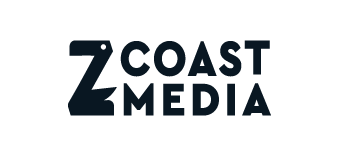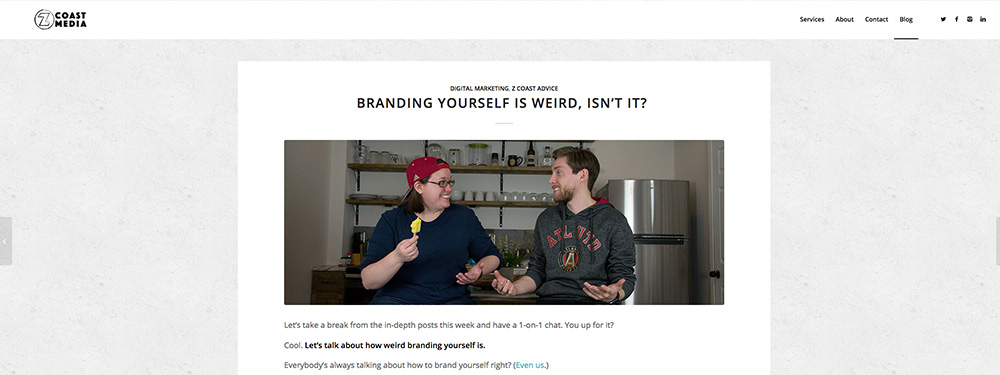So you’ve just launched your new business and you’ve got something you want people to know about. It’s dope and people are going to love it, but you feel awkward telling them about it and you don’t really know how you’re going to get the word out anyway because you’ve barely got a budget as is — if you’re lucky enough to even have a budget in the first place.
We’ve been there.
No money.
No direction.
No clue what to do next.
Thankfully, though, we live in the digital age with all kinds of tools at our fingertips that marketer’s past could only dream about.
Where there’s a will, there’s a way my friends, and if you believe in your business you’re always going to be on the lookout for new ways to help it grow. Starting out is tough, but promoting your business with a cheap (or no) budget isn’t impossible.
It’s actually far from it and we’re here to share some of the secrets of the trade with ya. Hope you enjoy!
Sometimes it’s Good to be a Cheapskate
If you’re reading this post and you know me or Nick on a personal level, you know we’ve both got a reputation for being cheap. In fact, you’ve probably called us cheap at some point.
And that’s fine.
There’s a time to splurge money and there’s a time to save money. There’s also a time when you don’t have the option of doing either because you have no money.
It usually happens when your fresh baby-face has just been thrust into the real world, far from the safety of your childhood bedroom as you try to forge your own path among the grown-ups. Or when you’re starting your own business.
However, you’ve got some options available to you as you dwell in the land of ramen and regret. You can learn how to make things work as best you can in your current situation, or you can give up before you even give yourself the chance to get started and run home to mom.
Nick and I prefer to learn from where we’re at and build up from there. Hopefully, you do too. You should never let lack of budget hold you back.
Especially when it comes to promoting your business. So yeah, we may be a little frugal at times, cheapskates if you will, but we never let money stop us from going as big as we can with Z Coast Media (ZCM).
Sometimes we cut back on eating out if we know site domain renewal is coming up, or we rethink that extra album purchase in favor of paying for our Google set up, but we do things like that because ZCM is a priority.
It’s not a sacrifice when it’s something you want to do because your business is something you believe in. But you can still promote and build your business with little to no budget at all.
One of our top priorities at the beginning of every year is to set aside money to cover all of the following expenses:
- LLC License
- P.O. Box
- Google Accounts
- Domain
- Hosting
These things have to be paid for to keep Z Coast running at its most basic level so we make it a priority to get these things paid for at the start of the year before we make room in the budget for anything else.
Once our top priority items are taken care of we then take the time to budget out the remaining money for any upgrades, new software, or anything else we know we’ll need or want in the coming year.
If there’s not enough leftover in your budget after taking care of the basics to help promote your business with, don’t worry. Cheap/free promotion tactics are what this post is all about.
Facebook is a Cheap At Twice the Price Option You Should Take Advantage of Yesterday
If you’re not familiar with the saying cheap at twice the price it just means extremely inexpensive. And Facebook is an extremely inexpensive way to promote your business.
But what about Facebook Ads?
What about ‘em? Yeah, they’re cool to have and maybe one day you’ll have the budget to run someone day but you’re here because you’re looking for inexpensive ways to promote your business, remember?
Facebook is a tool you just can’t afford to ignore when starting out. Just maintaining a healthy presence alone can help you engage people and grow awareness for your brand and that doesn’t cost a cent.
If you haven’t already, create a Facebook Page for your business. PLEASE. This will act as your home base for promoting your business on the social network.
When you’re setting up, make sure your Business Facebook Page aligns with your brand:
- Use your business logo as the primary photo for your page (your profile pic)
- Pick a cover photo that’s attractive and showcases what your business does or stands for
- Don’t neglect to type up a few sentences in the description about your brand
Now that you actually have a page, invite people to like it. There’s absolutely no shame in inviting friends and family to like the shiznit out of your FB page.
If people you know aren’t being supportive of your new business it might be time to start surrounding yourself with new (supportive people). Just saying.
For example, my mom and Nick’s dad never fail to like a single post that goes up on ZCM’s Facebook page and they’re pretty good about sharing posts too (though there’s room for improvement there…); thanks, y’all!
But the point is you need to invite people you know to like your page and encourage them to direct their other friends *gasp* to check out your page so, hopefully, they’ll like it too.
Word of mouth boys and girls. It’s as free as every red-blooded American and it can do wonders for promoting your business.

People like my Facebook Page…Now What?
Congrats, you have friends! Once you’ve got the page up and running do what we do and share, share, share!
Don’t go overboard or anything though. Typing that three times was just for emotional effect.
If you want to keep people coming back and new folks coming in, you’ve got to post interesting content that’s relevant to the people you’re attracting/want to attract.
People who like your page are gonna see your posts show up in their main news feed — although according to Mr. Zuckerberg that might be changing soon.
According to this article in USA Today, “Soon, Facebook says you will see more status updates from family and friends that spark meaningful social exchanges.” Zuckerberg wants people to spend less time passively scrolling and more time engaging in meaningful conversations and posts.
Facebook’s feed is still prime real estate that doesn’t cost you a penny. Make it count by taking the time to post thoughtfully to your page and share content that sparks the interactions Facebook wants to create with their upcoming feed changes.
The most successful Facebook posts today are videos but if you’re not comfortable making videos yet — and don’t say you can’t because you don’t have a camera ‘cause I bet you’ve got a smartphone that’s perfectly capable of taking video — get into the habit of sharing videos from other sources you enjoy.
You can mix it up with short, visual posts that drive people to comment, share, and like and Boom! you’re in the promoting business baby.
Post things like photos from inside your store, a behind the scenes look at your workspace or your latest blog post. Then head over to your Insights Tool.
Yep, Facebook even gives you a free to use insights tool with your super free Facebook Business Page. Dope, ain’t it?
Keep an eye on your Insights tool (you can access it via your Admin Menu) because it can tell you what time people look at your content, how many people see your content on average, and other cool stuff like that.
Some other Facebook business promotion tools you might consider
If you’re operating just above free and have a little budget to help promote your business on Facebook you might check out:
- Promoted Posts — Promoted Posts enable you to boost the visibility of a specific post on your Facebook Business Page. How much does a promoted Facebook post cost? It varies, but it’s rare that you’ll see the option for less than $5.00.
- Facebook Offers — Facebook Offers is a tool that allows you to create coupons that people can redeem online or in your store. You pay to have Facebook push your offer onto news feeds and your budget determines the number of people who will see your offer.
Of course, there’s always Facebook Ads but we’re here doing things on the cheap so we’re bypassing ads today and heading straight on to Instagram!
Instagram is Here to Help You Promote Your Business on the Cheap
According to Statista, as of September 2017, Instagram has 600 million monthly users.
600 million.
Are you kidding me?! That’s insane! But it’s fantastic news for you (especially if you’re selling something.) Why?
I’ll tell you why. Shoppers turn to social media for references. In fact, HubSpot uncovered that 79% of all online shoppers spend at least 50% of their shopping time researching products.
And where do they turn for recommendations from their friends and family? Yep, social media. So, you better believe people are looking for products, services, and recommendations on Instagram.
Don’t have a business Instagram account? Don’t sweat it. It’s easy and free to set up. Just remember it must be separate from your personal Insta.

How to Optimize Your Professional Instagram Account
First things first, take care of that bio.
Your bio is the one and the only opportunity you have to direct somebody from Instagram account to your website in a single click. So always, always, always have a link under your name/description.
It can be a link to your website, a landing page on your website, your blog, or your YouTube channel depending on what you do. Just do yourself a favor and take advantage of the opportunity to place a link in your bio.
△▲△
Now that you’ve got a link in your bio you can safely move on to creating a recognizable image. All the Instagramming in the world ain’t gonna mean sh*t if it’s not consistent with your brand.
The key to success on Instagram–and we’re defining success as brand awareness–is to make yourself instantly recognizable. This means you should have a checklist of things that consistently match your other social profiles across the board, including but not limited to your name and profile image.
Create Posts People Want to Follow & Double Tap
We all know that a picture is worth a thousand words but very few of us ever actually harness that power. But man is it powerful for your brand if you do.
The reason Instagram is so popular and keeps growing is that it’s an image-based platform. We’ve known for years that images get twice as many comments as text posts so it really shouldn’t be a surprise.
However, as a business account, you’ve got to be careful with your posts because it’s a lot easier to turn followers off from following (and engaging) with you as a brand than as a personal account.
△▲△
One way you can do yourself a favor is to avoid hard selling. Instagram is a social culture above all else but people go to great lengths to avoid the used-car salesman, right?
Friends hold the top slot when it comes to influencing people on Instagram, but 38% of people on social media say they’re buying decisions are influenced by a brand’s social media.
In other words, your posts have a lot of sway so let the images you post do the talking for you without the added pressure of a sales pitch as the caption. Get creative and remember you’re here to participate in the culture of the platform.
△▲△
How are you supposed to get yourself heard if you’re supposed to avoid the sales pitch? Post attention-grabbing photos that are unique to your brand and full of personality. Easier said than done, we know, but it’s clearly not impossible.
You want to improve your brand awareness. You want to do it for cheap. You need to get creative. Use your photos to establish relationships instead of flaunting your goods and you’re going to get some attention.
It should also be a priority of yours not to post any photos that are cropped funky, blurry, or stray from these suggestions for posting quality photos.
Note: Instagram also provides a lot of awesome editing tools that help you enhance the colors and moods of your photos. Use them. Play with them. Learn them. They’re free. They’ll make your photos look better.
Don’t forget to post lifestyle photos that capture your brand culture! People want to see the actual people behind your brand. The ones that make your brand, your brand. Lifestyle photos are also a great way to strengthen the feelings people associate with your brand.
△▲△
So far we’ve covered how to use the photos you post to Instagram to promote your brand itself and the services/goods you provide but you can do more with Instagram.
You can:
- Offer promotions and exclusive announcements to your followers
- Widen your discoverability with the use of hashtags
- Promote events
- Run contests
The list goes on. The point though is this: You have a lot of options to promote your brand and other things associated with your brand on Instagram. Which means you have a lot of opportunities to increase your brand awareness.
The best part? They’re all free. Yes, you can do ads and post boosts on Instagram just like you can with FB and maybe one day you’ll want to try those features out.
But for now, if you’re operating within a limited budget, Instagram is a phenomenal option for promoting your brand for free.
Promote Your Business Cheap as Chips with LinkedIn
Did you know LinkedIn is more than just a stuffy social site for business for professionals? It’s also a great place to promote your brand cheap as chips (we threw that one in there for you, over the pond readers).
And it’s really not that stuffy once you get to know it.
Anyway, there are something like 65 million people on LinkedIn and we don’t know about you but we wouldn’t waste the potential of all those connections if we were you.
LinkedIn is much different from social platforms like Facebook and Instagram but it’s an excellent place for networking, mentorship, and getting referrals.
You can’t get referrals or network if nobody knows about your brand, right? Off to LinkedIn with you! It’s free to set up a profile.
Getting Started on LinkedIn
To kick things off on LinkedIn you’ll need to:
- Learn how LinkedIn works
- Create a login
- Set up your company page and avoid being boring; keep it consistent, with your other social profiles
Once you’ve got the basics in place you have everything you need to start spreading the word about your brand and making connections with like-minded people.
Just have a company page on LinkedIn can help you build connections. But there’s no need to be lazy. Update your account regularly (truth: we forget to do this sometimes) to gain the attention of potential clients, customers, and partners.
This alone can help you:
- Gain exposure to people searching for the products or services you offer
- Obtain testimonials that provide credibility to your account
- Meet new potential clients
Pro tip: try to post regularly and focus on how what you’re doing can help others achieve their goals. People love stuff like that.
You can also get involved with groups related to whatever it is you do and build up your reputation as an expert in your industry by contributing to conversations.
Talk is Cheap, and So Are Podcasts
We saved the best platform for promoting your business cheaply for last.
This is something we’re about to get into ourselves, in fact, we may have already posted our first podcast by the time this blog post goes live. If so, check for an update link at the end of this post.
Anyway, podcasting is huge and it’s a content platform that’s still growing. There are opportunities everywhere and people who are interested in what you’re talking about will find you.
Why are podcasts so easy to consume (and therefore such an easy way to get the word out about you and your business)?
Because podcasts are easy to consume. People listen to podcasts at the gym, in the carpool line at school, at the grocery store, in the shower, the list goes on.
Podcasts are also easily accessible. They can be consumed on basically any device your audience owns — smartphone, laptop, tablet and unlike a radio show, they’re available on-demand.
Podcasting allows you to create a one-on-one connection with your audience (a lot like video does, which is another cheap option for promoting your brand). With podcasting, you get to be directly in your listener’s ear for however long you record.
As long as you aren’t boring. Please don’t be boring.
But most importantly, podcasts are free/cheap to create. Sure, you’ll eventually want to invest in some professional microphones and stuff like that but when you’re just getting started and looking for free ways to promote your brand, podcasting is the way to go.
We’ve already given you a ton of ideas to promote your brand for next to nothing, and if you’ve made it this far thank you for reading and bravo.
With that said, if you’re serious about learning how to promote your brand via a podcast, we suggest you check out this comprehensive guide on how to start a successful podcast from Shopify.
No, we’re not getting paid to type that or refer you to Shopify (though we’d totally be open to that Shopify, *winks*); honestly, I’m just tired of typing at this point.
That’s one heck of a guide you just read there, don’t you think?

How Will You Promote Your Brand?
If you found anything in this guide useful we’d be seriously interested to hear how you plan to put it to work for promoting your brand on the cheap.
Do us a favor and drop a comment below telling us some of your favorite ways to promote your business for practically nothing. What worked for you when you first started out?
Of course, if you’re shy, you can always just shoot us an email. See you back here in about two weeks! Thanks for reading!
In the meantime, feel free to connect with us on our YouTube channel. Vlogs go up weekly and videos go up bi-weekly.

















